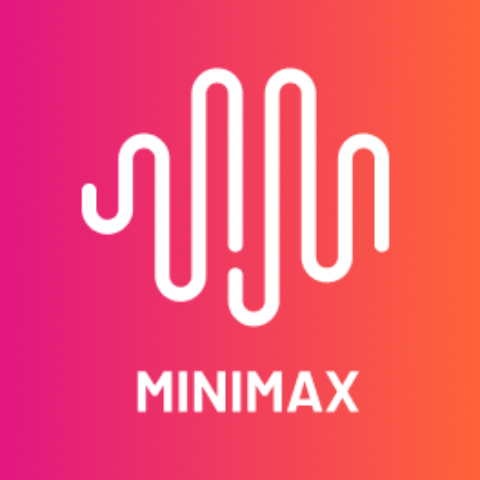JMStaticContentTableViewController 技术文档
1. 安装指南
使用 CocoaPods 安装
若您的项目已使用 CocoaPods,请将以下代码添加到您的 Podfile 文件中:
dependency 'JMStaticContentTableViewController'
然后执行 pod install 命令以安装依赖。
手动安装
您可以下载源文件或将其作为 git submodule 添加到项目中。以下是如何作为 submodule 添加的步骤:
$ cd YourProject
$ git submodule add https://github.com/jakemarsh/JMStaticContentTableViewController.git Vendor/JMStaticContentTableViewController
将文件夹 "JMStaticContentTableViewController" 中的所有文件添加到您的项目中。
ARC
JMStaticContentTableViewController 使用 Automatic Reference Counting (ARC)。如果您的项目未使用 ARC,您需要在所有 JMStaticContentTableViewController 源文件上设置 -fobjc-arc 编译器标志。在 Xcode 中,选择活动目标并选择 "Build Phases" 选项卡。在 "Compiler Flags" 列中,为每个 JMStaticContentTableViewController 源文件设置 -fobjc-arc。
2. 项目使用说明
JMStaticContentTableViewController 是一个 UITableViewController 的子类,用于简单快速地显示“静态内容”。这种内容的一个例子是 iOS 内置设置应用程序中的内容。它还可以轻松创建用于收集信息的 UITableViewControllers。
此库使用了非常酷的块(block)方法,并且允许您轻松创建具有不同样式的表格视图单元格,以及为单元格的选中事件添加回调。
3. 项目API使用文档
以下是 JMStaticContentTableViewController 的一些基本用法示例:
添加一个节和单元格
在您的 viewDidLoad 方法中,您可以按照以下方式添加节和单元格:
- (void)viewDidLoad {
[super viewDidLoad];
[self addSection:^(JMStaticContentTableViewSection *section, NSUInteger sectionIndex) {
[section addCell:^(JMStaticContentTableViewCell *staticContentCell, UITableViewCell *cell, NSIndexPath *indexPath) {
staticContentCell.cellStyle = UITableViewCellStyleValue1;
staticContentCell.reuseIdentifier = @"DetailTextCell";
cell.textLabel.text = NSLocalizedString(@"Wi-Fi", @"Wi-Fi");
cell.detailTextLabel.text = NSLocalizedString(@"T.A.R.D.I.S.", @"T.A.R.D.I.S.");
} whenSelected:^(NSIndexPath *indexPath) {
[self.navigationController pushViewController:[[WifiViewController alloc] init] animated:YES];
}];
}];
}
在运行时插入单元格
此方法与 addCell: 类似,但会使用动画将单元格插入到表格中:
- (void)_someTaskFinished {
[self insertCell:^(JMStaticContentTableViewCell *staticContentCell, UITableViewCell *cell, NSIndexPath *indexPath) {
staticContentCell.reuseIdentifier = @"WifiNetworkCell";
staticContentCell.tableViewCellSubclass = [WifiNetworkTableViewCell class];
cell.textLabel.text = network.networkName;
cell.accessoryType = UITableViewCellAccessoryDetailDisclosureButton;
cell.indentationLevel = 2;
cell.indentationWidth = 10.0;
} whenSelected:^(NSIndexPath *indexPath) {
// TODO
} atIndexPath:[NSIndexPath indexPathForRow:0 inSection:0] animated:YES];
}
在运行时插入多个单元格
与上述方法类似,但这里我们在 beginUpdates 和 endUpdates 调用中包装我们的工作,以保留 UITableView 的所有内置“魔法”,同时仍然使用我们的简洁语法:
[self.tableView beginUpdates];
for(SomeModelObject *o in self.awesomeModelObjects) {
[self insertCell:^(JMStaticContentTableViewCell *staticContentCell, UITableViewCell *cell, NSIndexPath *indexPath) {
staticContentCell.reuseIdentifier = @"SomeCell";
cell.textLabel.text
} atIndexPath:[NSIndexPath indexPathForRow:0 inSection:0] animated:YES];
}
[self.tableView endUpdates];
动画
当您要求 JMStaticContentTableViewController 动画插入或删除单元格或节时,它会在底层使用 UITableViewRowAnimationAutomatic 样式的动画,因此所有动画都会看起来很棒。此样式在 iOS 5 中添加。
4. 项目安装方式
请参考上述 "安装指南" 部分中的内容进行项目安装。您可以使用 CocoaPods 或手动方式添加到项目中。
 ERNIE-4.5-VL-28B-A3B-ThinkingERNIE-4.5-VL-28B-A3B-Thinking 是 ERNIE-4.5-VL-28B-A3B 架构的重大升级,通过中期大规模视觉-语言推理数据训练,显著提升了模型的表征能力和模态对齐,实现了多模态推理能力的突破性飞跃Python00
ERNIE-4.5-VL-28B-A3B-ThinkingERNIE-4.5-VL-28B-A3B-Thinking 是 ERNIE-4.5-VL-28B-A3B 架构的重大升级,通过中期大规模视觉-语言推理数据训练,显著提升了模型的表征能力和模态对齐,实现了多模态推理能力的突破性飞跃Python00 Kimi-K2-ThinkingKimi K2 Thinking 是最新、性能最强的开源思维模型。从 Kimi K2 开始,我们将其打造为能够逐步推理并动态调用工具的思维智能体。通过显著提升多步推理深度,并在 200–300 次连续调用中保持稳定的工具使用能力,它在 Humanity's Last Exam (HLE)、BrowseComp 等基准测试中树立了新的技术标杆。同时,K2 Thinking 是原生 INT4 量化模型,具备 256k 上下文窗口,实现了推理延迟和 GPU 内存占用的无损降低。Python00
Kimi-K2-ThinkingKimi K2 Thinking 是最新、性能最强的开源思维模型。从 Kimi K2 开始,我们将其打造为能够逐步推理并动态调用工具的思维智能体。通过显著提升多步推理深度,并在 200–300 次连续调用中保持稳定的工具使用能力,它在 Humanity's Last Exam (HLE)、BrowseComp 等基准测试中树立了新的技术标杆。同时,K2 Thinking 是原生 INT4 量化模型,具备 256k 上下文窗口,实现了推理延迟和 GPU 内存占用的无损降低。Python00 MiniMax-M2MiniMax-M2是MiniMaxAI开源的高效MoE模型,2300亿总参数中仅激活100亿,却在编码和智能体任务上表现卓越。它支持多文件编辑、终端操作和复杂工具链调用Python00
MiniMax-M2MiniMax-M2是MiniMaxAI开源的高效MoE模型,2300亿总参数中仅激活100亿,却在编码和智能体任务上表现卓越。它支持多文件编辑、终端操作和复杂工具链调用Python00 HunyuanVideo-1.5HunyuanVideo-1.5作为一款轻量级视频生成模型,仅需83亿参数即可提供顶级画质,大幅降低使用门槛。该模型在消费级显卡上运行流畅,让每位开发者和创作者都能轻松使用。本代码库提供生成创意视频所需的实现方案与工具集。00
HunyuanVideo-1.5HunyuanVideo-1.5作为一款轻量级视频生成模型,仅需83亿参数即可提供顶级画质,大幅降低使用门槛。该模型在消费级显卡上运行流畅,让每位开发者和创作者都能轻松使用。本代码库提供生成创意视频所需的实现方案与工具集。00 MiniCPM-V-4_5MiniCPM-V 4.5 是 MiniCPM-V 系列中最新且功能最强的模型。该模型基于 Qwen3-8B 和 SigLIP2-400M 构建,总参数量为 80 亿。与之前的 MiniCPM-V 和 MiniCPM-o 模型相比,它在性能上有显著提升,并引入了新的实用功能Python00
MiniCPM-V-4_5MiniCPM-V 4.5 是 MiniCPM-V 系列中最新且功能最强的模型。该模型基于 Qwen3-8B 和 SigLIP2-400M 构建,总参数量为 80 亿。与之前的 MiniCPM-V 和 MiniCPM-o 模型相比,它在性能上有显著提升,并引入了新的实用功能Python00 GOT-OCR-2.0-hf阶跃星辰StepFun推出的GOT-OCR-2.0-hf是一款强大的多语言OCR开源模型,支持从普通文档到复杂场景的文字识别。它能精准处理表格、图表、数学公式、几何图形甚至乐谱等特殊内容,输出结果可通过第三方工具渲染成多种格式。模型支持1024×1024高分辨率输入,具备多页批量处理、动态分块识别和交互式区域选择等创新功能,用户可通过坐标或颜色指定识别区域。基于Apache 2.0协议开源,提供Hugging Face演示和完整代码,适用于学术研究到工业应用的广泛场景,为OCR领域带来突破性解决方案。00
GOT-OCR-2.0-hf阶跃星辰StepFun推出的GOT-OCR-2.0-hf是一款强大的多语言OCR开源模型,支持从普通文档到复杂场景的文字识别。它能精准处理表格、图表、数学公式、几何图形甚至乐谱等特殊内容,输出结果可通过第三方工具渲染成多种格式。模型支持1024×1024高分辨率输入,具备多页批量处理、动态分块识别和交互式区域选择等创新功能,用户可通过坐标或颜色指定识别区域。基于Apache 2.0协议开源,提供Hugging Face演示和完整代码,适用于学术研究到工业应用的广泛场景,为OCR领域带来突破性解决方案。00